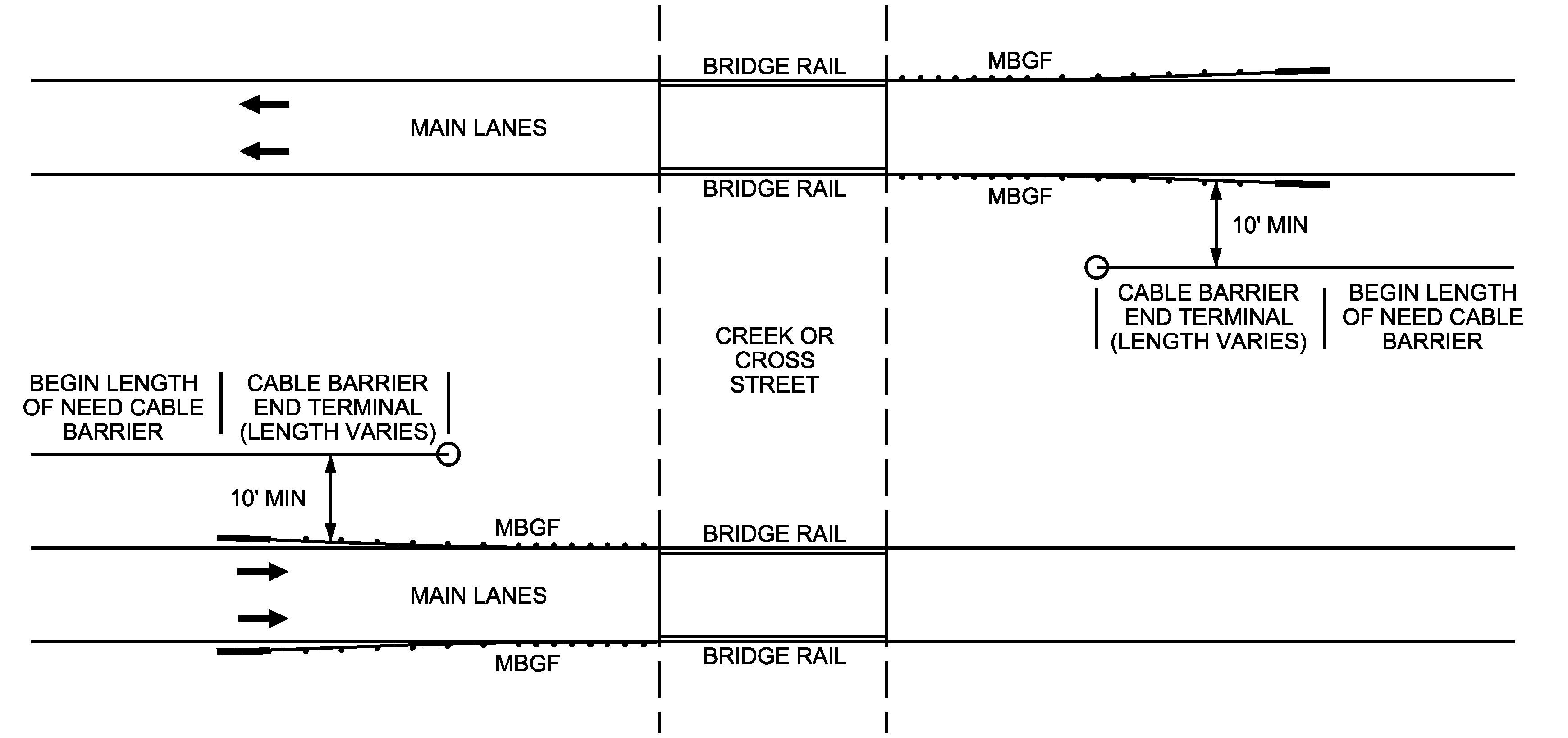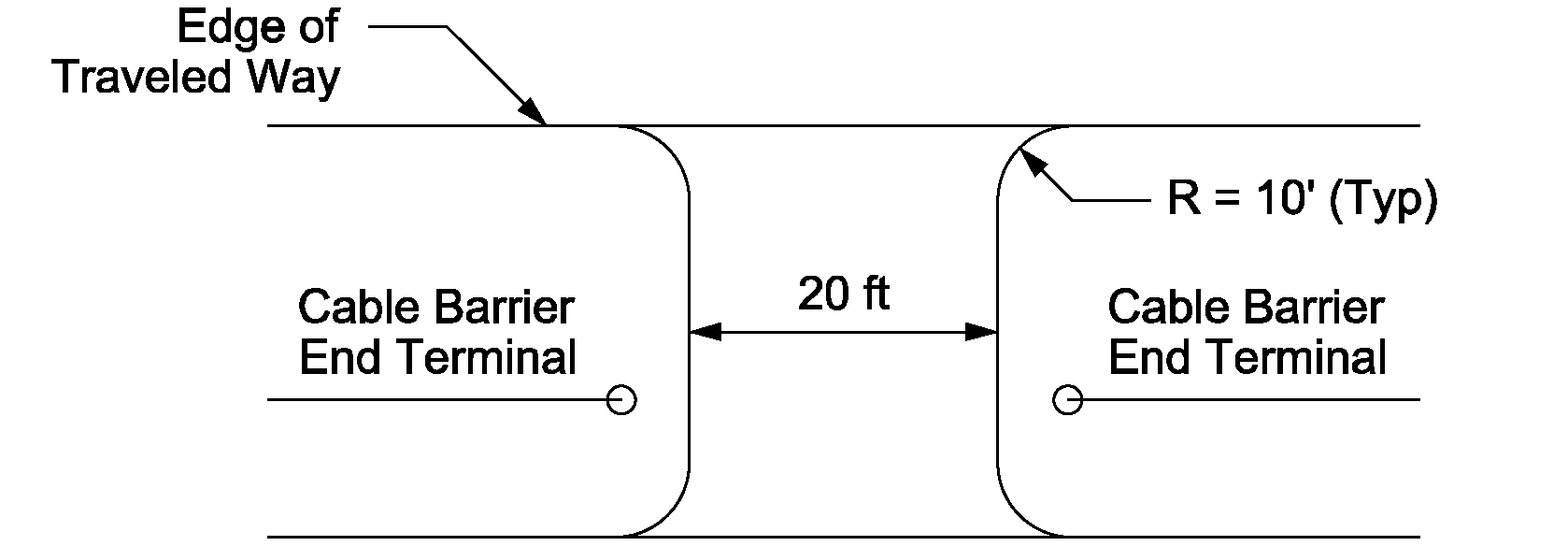Section 9: Emergency Crossovers
Anchor: #i1042806Overview
Emergency crossovers may be provided when needed to facilitate official vehicles. Coordination with local and state law enforcement and emergency services personnel is recommended to identify roadway sections where emergency crossovers may be necessary.
Anchor: #i1042874Location
Refer to Chapter 7 Section 6, Emergency Crossovers for guidance when selecting a location for an emergency crossover.
Anchor: #i1043159Construction
When ending a run of cable barrier, the cable barrier terminals should be located, when possible, behind some protection such as the MBGF, leaving adequate distance to allow an emergency vehicle to maneuver around if necessary. See Figure A-17.
Figure A-17. Cable Terminals Behind Metal Beam Guard Fence
The terminals can be placed in locations with no protection, but since they provide the anchorage for the cable barrier system, protecting them from possible hits is recommended. These terminals are also gating (meaning they will not prevent a vehicle from going through).
When switching the cable barrier from one median side to the other and the terminals are not protected, overlapping the runs of cable barrier is recommended to provide adequate protection from possible crossovers if the median is wide enough to allow emergency vehicles to utilize it as an effective emergency crossover. (See Figures A-18 through A-19). The cable barrier anchor terminal should be protected behind guard fence or other barriers from potential impacts. An exposed cable barrier anchor terminal will render the cable system ineffective if damaged by an impact.
Figure A-18. Recommended Cable Barrier Lap Length
Another typical layout for emergency crossovers may be as shown below.
Figure A-19. Another Typical Layout for Emergency Crossovers
- Anchor: #QENLRRED
- Emergency crossovers should be an all-weather surface. It is recommended that they be constructed with a surface treatment that does not invite use. Grade 1 or 2 aggregate or bladed recycled asphalt pavement (RAP) has provided an adequate low cost surface in some applications. Anchor: #LNNRKOAA
- Emergency crossovers should be approximately 20-ft with return radii of 10-ft. Wider crossovers invite non-emergency use and should only be constructed after an engineering study of the site. Anchor: #BGVVPNTI
- To be inconspicuous to main lane traffic, the surface should be depressed below the shoulder level, if possible.


